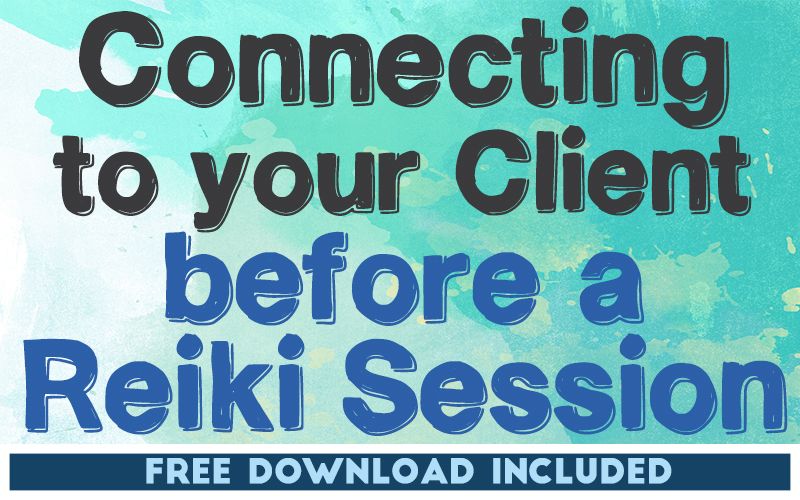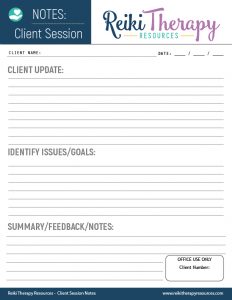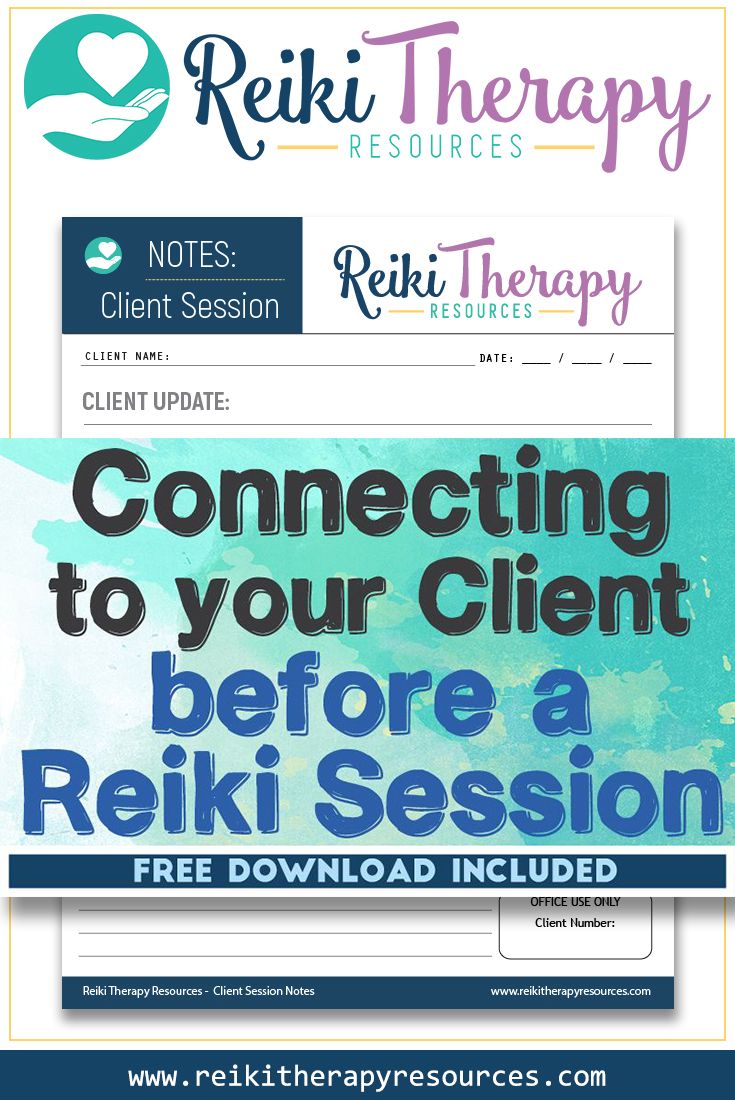
THIS POST INCLUDES:
——————————————–
1. Connecting to your client
2. Components of client relationships
3. Barriers to connecting to your client
4. How to connect with your Reiki client
5. Free Download: Client session plan template
CONNECTING TO YOUR CLIENT
Establishing a therapeutic connection with your client is an important part of the Reiki treatment process. Research shows that for professions that require healing client work that establishing a therapeutic alliance is a strong predictor of treatment success. This is also prevalent in other wellness sectors such as medical, allied health, and mental health professionals.
Establishing a connection with your client is difficult to quantify as it refers to an intangible connection that explains how trust and openness are established with your client. Professionals can facilitate this process with practical steps that show your client that you have their best interests as your priority in treatment.
Developing a client connection can take time to build over many sessions, however, you can begin developing a connection in the first session by showing empathy, acceptance, and a positive attitude towards your client and how you can help them.
By undertaking this step in your first session, you will increase the possibility that your client will return for further Reiki sessions with the belief that they can find help with you as their Reiki practitioner.
As you build a connection with your client, it is also important to establish boundaries between professional and personal interactions with your client, so they clearly understand the issues that you are qualified to help them with.
COMPONENTS OF CLIENT RELATIONSHIPS
The below list is a summary of the most important components of building a client relationship:
- you are interested in your client and have a willingness to help them
- you are open-minded about the issues your client is experiencing
- you can understand your client’s problems
- you do not judge your client for the issues they are experiencing
BARRIERS TO CONNECTING TO YOUR CLIENT
For the majority of clients, they come to Reiki with a desire to seek help and healing. With this in mind, they are mostly open to establishing a positive relationship with a helpful Reiki practitioner.
However, despite this willingness, some clients may be coming to Reiki sessions with preconceived ideas about Reiki or alternative health healing services. Furthermore, some clients may come to Reiki treatment with feelings of anger, shame, and guilt about the issue they are seeking help for. If a client is experiencing emotions of anger, shame, and guilt about their situation or themselves, this can make connecting with your client difficult if your client is hesitant and has difficulty being open to receiving Reiki.
An additional barrier to developing a connection with clients is the time allocated to Reiki sessions. If the client is attending sessions irregularly and living in crisis between each session, this can require some additional effort on behalf of the Reiki practitioner to be aware of their client’s situation and work to overcome any potential time barriers. This may mean being available for after hours appointments if this suits both the client and the practitioner.
If a client has an experience of past trauma, this can significantly impact the client’s ability to connect with other people, including a Reiki practitioner. Our relationships are often based on our experiences of other relationships that involve trust, safety, compassion, and acceptance. If these factors are compromised in your client’s past relationships, they may have difficulty in developing them in the Reiki practitioner relationship.
Although these barriers may exist with your client, they can be broken down over time. This will require patience and understanding your client’s coping mechanisms when interacting with other people.
HOW TO CONNECT WITH YOUR REIKI CLIENT
Connecting with your Reiki client can be approached from different aspects. You can connect with your client outside of your session work as well as part of session work. These two approaches are explored below:
OUTSIDE OF REIKI SESSIONS
Provide your clients with an opportunity to connect with you and your business outside of direct Reiki sessions. Below are some examples of how to connect with your Reiki clients outside of sessions:
- Social media
- Direct emails
- Newsletter emails with educational content on wellbeing activities (eg. Self-care)
- Workshop and group events (eg. Meditation groups)
- Social gatherings and events (eg. New year events)
PART OF REIKI SESSIONS
Before your first Reiki session with your client, ensure they are educated about your practice and how you work. Make sure your client receives detailed information about accessing your practice location and how to make payment and book further sessions. All of this information is administration, however, if your administrative aspects can function smoothly, this helps your client develop confidence in your ability to handle their wellbeing and client’s needs.
You may also want to provide some reading material for your client that provides some educational content on the best way to prepare for a Reiki session and how they can arrive at the session with a positive and open mind.
When your client arrives at their Reiki session, ensure that you have administrative procedures in place that makes your client feel welcome to your practice. Ensure your waiting room has a relaxing atmosphere to help prime your client’s expectations for a helpful Reiki session.
Once your client is in session with you, this is your moment to help walk your client through your approach to providing Reiki treatment for them. Make your client feel welcome and assure them that you are there to help them.
You may want to ask your client if they have any questions about the Reiki session and whether they have any hesitations that may be concerning them.
For more information on working with your client in session, read our blog post: How to Begin and End a Reiki Session Effectively
If you find your client is feeling tension before a session, ask them to join in some deep breathing to help reduce any anxiety and apprehension that they may have. The 4-7-8 breathing technique is especially helpful and effective in alleviating tension.
The 4-7-8 breathing technique is: Breathe in for 4 seconds, hold your breath for 7 seconds, and exhale over 8 seconds
The most important process of establishing a connection with your client is to help them understand that you are there for them.
FREE DOWNLOAD
SIGN UP below to receive your FREE DOWNLOAD. Once you enter your email address, you will receive access to the Free Client Session Notes Template.

BUILD YOUR REIKI REFERENCE MATERIALS:
Pin this image to your Pinterest board.

SHARE KNOWLEDGE & PASS IT ON:
If you’ve enjoyed this post, please share it on Facebook, Twitter, Pinterest. Thank you!
